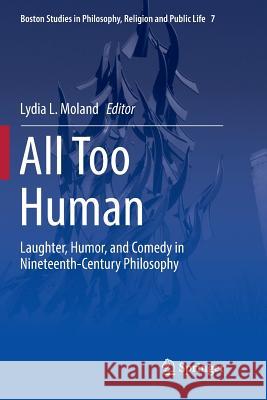All Too Human: Laughter, Humor, and Comedy in Nineteenth-Century Philosophy » książka
topmenu
All Too Human: Laughter, Humor, and Comedy in Nineteenth-Century Philosophy
ISBN-13: 9783030082277 / Angielski / Miękka / 2019 / 198 str.
All Too Human: Laughter, Humor, and Comedy in Nineteenth-Century Philosophy
ISBN-13: 9783030082277 / Angielski / Miękka / 2019 / 198 str.
cena 403,47
(netto: 384,26 VAT: 5%)
Najniższa cena z 30 dni: 385,52
(netto: 384,26 VAT: 5%)
Najniższa cena z 30 dni: 385,52
Termin realizacji zamówienia:
ok. 22 dni roboczych
Bez gwarancji dostawy przed świętami
ok. 22 dni roboczych
Bez gwarancji dostawy przed świętami
Darmowa dostawa!
Kategorie BISAC:
Wydawca:
Springer
Seria wydawnicza:
Język:
Angielski
ISBN-13:
9783030082277
Rok wydania:
2019
Wydanie:
Softcover Repri
Numer serii:
000454862
Ilość stron:
198
Waga:
0.30 kg
Wymiary:
23.39 x 15.6 x 1.14
Oprawa:
Miękka
Wolumenów:
01
Dodatkowe informacje:
Wydanie ilustrowane











